You can immediately see it from the type designation: this is an outsider. Officially it is a Mercedes, but we do not actually know the name Orion in the Mercedes delivery program. So you immediately wonder where this car comes from. Let's be clear: this is not a premium sedan from the German prestige brand, nor is it a truck, but a camper. And yet the vehicle enjoys great fame, as it was featured weekly on television in the popular TV program 'Man Bijt Hond'.
This rare camper Mercedes Orion L 206 DG from 1974 was brought from Germany, technically completely in order and once used in the popular TV program. The Orion company in Germany originally built this camper on a Mercedes Hanomag and Volkswagen chassis. And, don't be alarmed, it wasn't originally a camper but an amphibious vehicle!
Owner Bas Klaaijsen from Swifterbant: “This Orion is known from a Dutch TV program, was then exported to Belgium and now back in the Netherlands. It stood still for three years. The car drives, brakes and shifts properly. The furnishings are still original. The interior does need some attention. The vehicle was previously wrapped in black in connection with the logo of the TV program 'Man bijt hond'. When it was sold, of course, the advertising had to be removed. Now it is neat again in its gray color, actually it is in the primer. It is a unique camper that can be restored to its former glory or turned into a food truck. I don't know yet what purpose I will give it.”
The Orion shown dates from 1974. But the first prototype of the Orion was created as early as 1969. The body was mounted on a Matado chassis type F20 and equipped with a 50 hp Perkins diesel engine. The length was six meters. The front no longer had a boat shape and no longer had a propeller for sailing. This first model was built in series until 1974.
The design was very similar to the Suleica G500. And just like the Orion Type L 206, there was a seating area in the back with a long table and seats in a round shape around it. In the middle there is a large toilet/laundry room and a kitchenette with refrigerator. Furthermore, there is a wardrobe with Truma heater and hot air ventilation system. The furniture is made of chipboard with cherry decor. On the driver's side of the vehicle there was the possibility to create more sleeping places. The customer was king, in terms of layout everything was actually possible as the customer wanted. Almost every Orion therefore has its own unique layout. Even storage spaces in the floor (accessible from the inside) were possible.
Bas Klaaijsen's camper has a changed front. That came about when the chassis from the Hanomag/Henschel company was switched from 1974 onwards. The headlights then became rectangular and the front now resembled the Hanomag Garant. But the link with the VW bus remained with the Orion L 206 DG (I), due to the use of the VW rear lights. As a result, curious people sometimes wonder whether it is a hidden Mercedes or an extended VW.
The petrol engines came from Austin, type A60, 1536 cc with 54 hp or from the A70 with 1800 cc with 70 hp. The diesel came from Mercedes, type 200/220 with 55/60 hp. The camper had front-wheel drive, which meant that the turning circle was quite large. Mercedes later supplied the chassis for the L206/306 DG diesel type and the L207 petrol, after Hanomag-Henschel was taken over by Mercedes.
Where does Orion come from? In 1968, the company founded by Ing. Dr. Freise designed sailing camper named Orion. A modified structure of a Suleica G26 was mounted on a modified chassis of a Volkswagen van 'Type 500'. A new front was created with Tempo–Matador's round headlights and a boat-shaped bottom. There was a permanently mounted propeller aft. But with this vessel or vehicle it was just like with the giant wooden plane 'Spruce Goose' by Howard Hughes. Once sailed through a harbor for presentation and then forgotten. However, this prototype still exists on a VW basis. And although without a boat propulsion, it can still be seen on the road.
Then the term Suleica. Also a different story, that started in 1958/59. Then the company 'Kunststofftechnik Ferdinand Schäfer' in Detmold (D) decided to build a lightweight caravan from GRP. Experience in building objects using glass fiber reinforced plastics had existed for more than ten years. An attention-grabbing caravan was created on the drawing board with a body length of 4,30 m, a weight of approximately 560 kg and a permissible total weight of 800 kg. The model name was F430. No, not related to Ferrari.
The round, almost feminine shapes dominated this model. There were convex windows at the corners, and a 14 cm thick, hollow, well-insulated floor at the bottom. In short, the entire design promised a caravan/camper that could last for years. The design was so strong that a patent was granted at home and abroad. The first presentation was in 1962 and then the model was built in series until 1968. In view of the presentation in the leading German magazine “Auto-Motor-und-Sport”, the name 'Superleichtcaravan' was introduced, coined by the well-known journalist Fritz B. Busch. This was shortened to “SULEICA”. A name that has always survived. It almost became a pet name.
Two fires at the Schäfer company in 1972 and 1974 resulted in significant damage. The molds of the Suleica and Orion were severely damaged. Production of the Suleica was moved to Hungary to save costs. Nevertheless, production of the Orion II model started in 1974. The model, depicted on this AMK page and owned by Bas Klaaijsen, was more rectangular than its predecessor. That was the fashion at the time. But the vehicle did not have the characteristic convex corner windows, but was equipped with larger side windows and a much larger rear window. The special roof was also retained. And a year later – 1975 – the shortened model, the Orion 500, appeared on the market.
Four years later, in 1978, the Orion III arrived. The production of the chassis at Mercedes was stopped. That was the reason to introduce the new Orion III model. The Orion III had a front in which the shape of the new Mercedes was recognizable. The interior remained very similar to the Orion II from this report. But in the front compartment where the drivers had their seats, modern swivel seats appeared. And of course there was a choice of all available engine variations up to and including 5 cylinder engines and automatic gearboxes.
However, things did not become easier after 1978. The increasingly strict regulations in vehicle construction and of course the high production costs made it impossible to continue the production of these beautiful vehicles in the long term. It took approximately 800 workshop hours to build one vehicle by hand. Craftsmanship of course, but that made the last Orions extremely expensive. A fully equipped Orion III cost more than DM 100.000,00.
In addition, manufacturer Schäfer had to give up the company as a result of the losses caused by the fire. There was another attempt to save the company by a BMW garage: the Depping company from Detmold. They took over management for a short time under the name TFG (Teutoburger Fahrzeugwerke und Gerätebau GmbH), but that too was of no avail for various reasons. It was the end of the story. The last Orion, a type II 500, was built in 1987 by Teutoburger Fahrzeugwerken 1987. It was designed as an office vehicle and a camper at the same time. After this last action, the factory doors closed. An unfortunate loss for the camper world and an inglorious end to a great brand.
It is clear to everyone that the Mercedes-Benz – Orion Type L 206 DG is a special appearance on the road network. It's an outsider. But Bas Klaaijsen's Orion II has something extra. He played a role in the TV series 'Man Bijt Hond'. In 2015, 'Man Bijt Hond' was taken off the air by the public broadcaster after sixteen years. The viewing figures continued to decline, the end of the iconic program about 'ordinary people'. But since the summer of 2019, the program has been back on screen and has been a success. On SBS6 of all places. The viewing figures are good, because: “We like to look in through the curtains and know what's going on at the neighbor's house. It is recognizable television about you and me. That formula is timeless and it suits the channel well.” Making small news big, without presenters and with ordinary people instead of famous Dutch people. And with the most famous camper in the Netherlands in a special supporting role! That's the best way to describe 'Man Bites Dog'.
Article thanks to: Stefan Kock for the many details (CAD constructor AD and owner of an Orion 600 type), Arjen Monsees for the translation into Dutch and Bas Klaaijsen (owner Kitcar Collection) for making the vehicle available. Text and photos: Peter Vader.



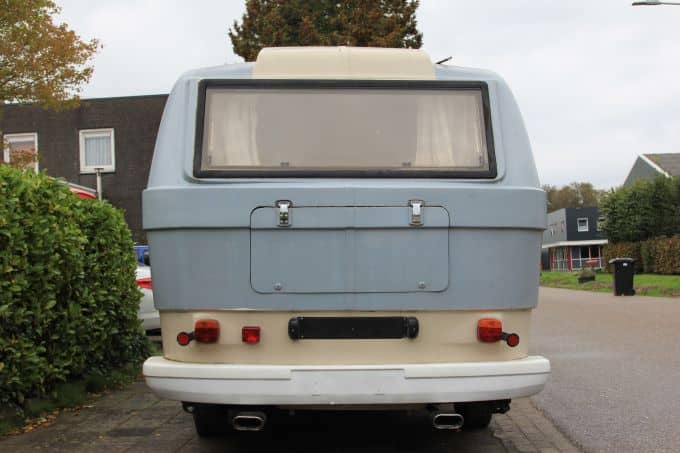

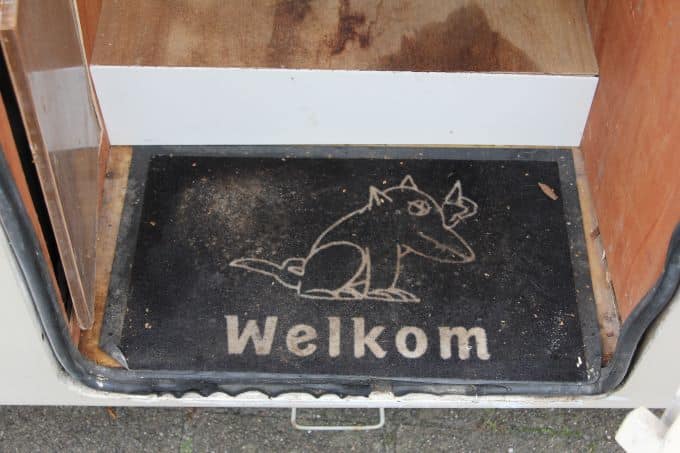


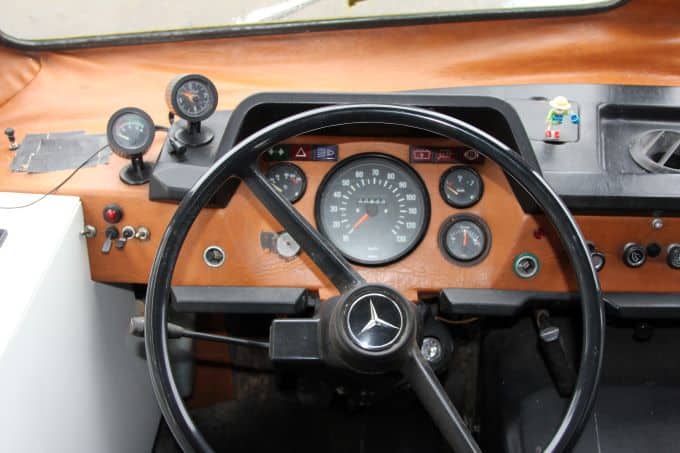
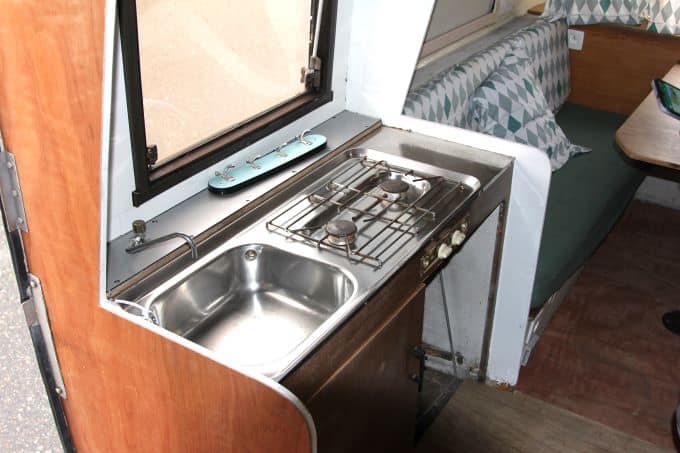
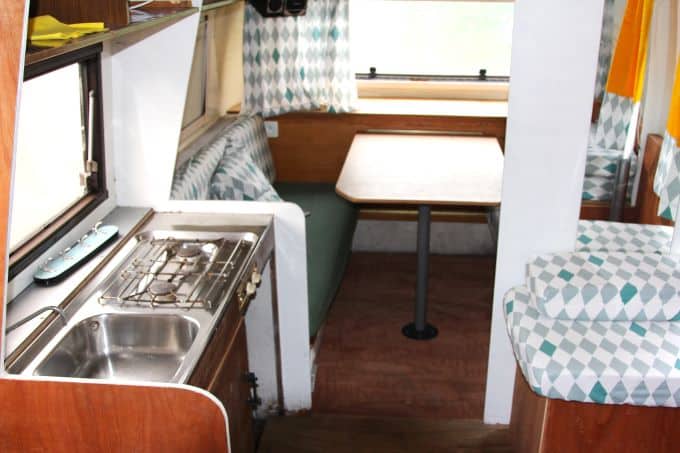



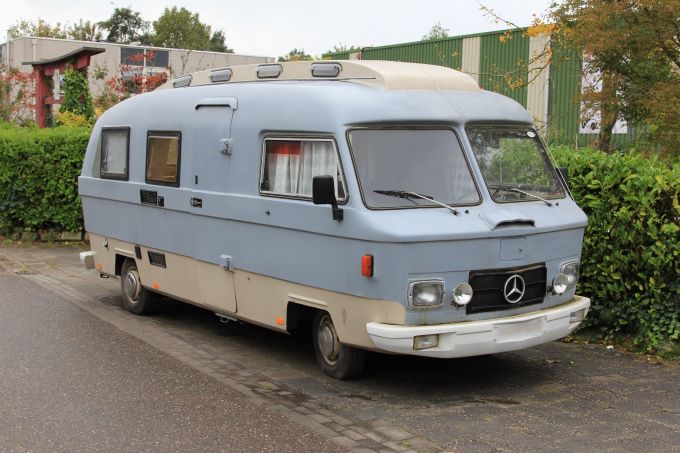

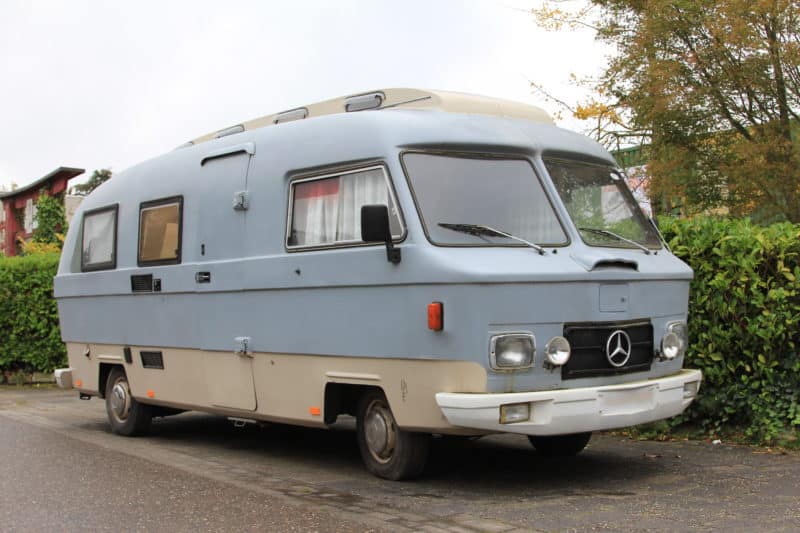

As a Vintage camper enthusiast, I really appreciate these, they are particularly attractive to look at and practically furnished. I didn't know about that amphibian past, I would like to know that myself. Nice and informative article.